MCQ ON MICROBES IN HUMAN WELFARE class 12 for NEET | MICROBES IN HUMAN WELFARE class 12 | MCQ MICROBES IN HUMAN WELFARE with Answer | Check the below NCERT MCQ question for class 12 Biology based on the with Answers.
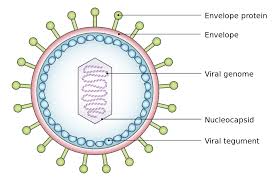
MCQ ON MICROBES IN HUMAN WELFARE class 12 for NEET
MCQ on MICROBES IN HUMAN WELFARE class 12 Biology with answers were prepared based on the latest pattern.We have provided class 12 Biology MCQs questions on MICROBES IN HUMAN WELFARE with Answers to help students understand the concept very well.
MCQ ON MICROBES IN HUMAN WELFARE is useful for NEET / CSIR / UGC / CBSE / ICSE / AIIMS / EXAM / AFMC EXAM / STATE LEVEL MEDICAL EXAM 2022-23, 2023-24
Introduction:
Besides macroscopic plants and animals Microbes the major components of biological system on this earth.
Microbes are present everywhere in soil, water, air inside our bodies and that of other animals and plants.
Microbes are diverse protozoa bacteria fungi and microscopic animals and plants viruses and viroids and also prions are proteineous infectious agents. Microbes like bacteria and many fungi can be grown on nutritive media to form colonies.
Microbes cause a large number of disease in human beings. They also coach disease in animals and plants. But this not make you think that all microbes are harmful. Several microbes are useful to man in diverse ways.
MCQ ON MICROBES IN HUMAN WELFARE class 12 for NEET
1. Pyrethrin is extracted from
(a) Azadirachta indica
(b) Helianthus annuus
(c) Poa indica
(d) Chrysanthemum cinerarifolium
Ans (d) Chrysanthemum cinerarifolium
2. The earliest pesticides was
(a) Margosa
(b) Pyrethrum
(c) Nicotine
(d) DDT
Ans. (a) Margosa
3. Root nodule for nitrogen fixation of a nonleguminous tree possess
(a) Frankia
(b) Rhizobium
(c) Azotobacter
(d) Thiobacillus
Ans. (a) Frankia
4. Mycorrhiza represents
(a) Antagonism
(b) Endemism
(c) Symbiosis
(d) Parasitism
Ans.(c) Symbiosis
5. Leghaemiglobin occurs in
(a) Coralloid roots
(b) BGA
(c) Around bacteroids
(d) Mycorrhiza
Ans.(c) Around bacteroids
6. Azotobacter and Bacillus polymyxa are
(a) Decomposers
(b) Nonsymbiotic nitrogen fixers
(c) Symbiotic nitrogen fixers
(d) Pathogenic bacteria
Ans.(b) Nonsymbiotic nitrogen fixers
7. Yield of paddy field can be increased by application of
(a) iron bacteria
(b) Nostoc/ Anabaena
(c) Archaebacteria
(d) Symbiotic bacteria
Ans.(b) Nostoc/ Anabaena
8.Green manure plants belong to
(a) Compositae
(b) Solanaceae
(c) Poaceae
(d) Leguminosae
Ans.(d) Leguminosae
9. Yoghurt is produced with the help of
(a) Lactobacillus bulgaricus
(b) Lactobacillus thermophilus
(c) Streptococcus thermophilus
(d) Both A and C
Ans. (d) Both A and C
10. Which is a microbial insecticide ?
(a) Bacillus thuringiensis
(b) B.subtilis
(c) B.polymixa
(d) B.brevis
Ans. (a) Bacillus thuringiensis
11. Enzyme that changes glucose to ethyl alcohol
(a) Zymase
(b) Diastase
(c) Invertase
(d) Maltase
Ans.(a) Zymase
12. Citric acid is got from
(a) Aspergillus niger
(b) Rhizobium nigricans
(c) Penicillium citrinum
(d) Lactobacillus vulgaricus
Ans . (a) Aspergillus niger
13. Farmers have reported 50 % higher yield of Rice by using biofertilizer
(a) Azolla pinnata
(b) Legume – Rhizobium Symbiosis
(c) Cyanobacteria
(d) Mycorrhiza
Ans.(a) Azolla pinnata
14. Thurioside is proteineous toxin obtained from
(a) Biofertilizer
(b) Green manure
(c) Bacterial origin
(d) Farmyard manure
Ans. (c) Bacteria origin
15. Latest trend in plant disease control is
(a) Chemical control
(b) Biological control
(c) Good manure and feerlisers
(d) Breeding for disease resistance
Ans.(b) Biological control
16. Group of Bacteria used in biogas production.
(a) Eubacteria
(b) Organotrophs
(c) Methanotrophs
(d) Methanogens
Ans.(d) Methanogens
ALSO READ:-
● YOU CAN WATCH BIOLOGY SIR Youtube channel
17. A third generation pesticide is
(a) Pheromone
(b) Weedicide
(c) Juvenile hormone analogue
(d) Sterilogasterone
And.(c) Juvenile hormone analogue
18. VAM is important for
(a) Breaking of dormancy
(b) Phosphate nutrition
(c) Water uptake
(d) Regarding flowering
Ans. ( b) Phosphate nutrition
19. Confusion technique uses
(a) Juvenile hormone
(b) Ecdysone
(c) Pheromone
(d) A combination of hormone
Ans.(c) Pheromone
20. Insecticide Pyrethrum is prepared from
(a) Vetiveria
(b) Chrysanthemum
(c) Tephrosia
(d) Cymbopogon
Ans.(b) Chrysanthemum
21.Vermicompost is Biofertilizer rich in
(a) Phosphorus
(b) Calcium
(c) Nitrogen
(d) All the above
Ans.(d) All the above

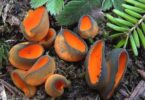
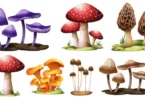
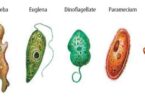
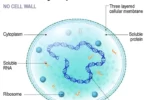
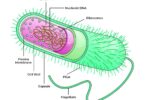
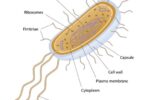
Leave a Comment